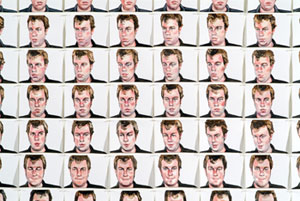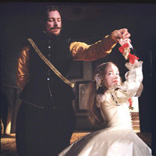Joey Fauerso's
residency in Roswell, New Mexico, has given her time from her job as an
art educator to focus on her art. I asked her to share her experiences
of the residency during May 2006.
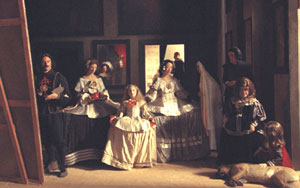
WA: What is the structure of the residency?
JF: The Roswell Artist in Residence Program was founded by Don Anderson, an artist, businessman and genuine free-thinker, I think in the late 1960s. The structure of the program has been formalized over the years. Now five artists are invited to come and live at the residency for one year. They are provided with a house and studio, along with a stipend. Somewhere in the second half of the program, the residents are invited to have a show at the Roswell Museum of Art, which is the only real structured part of the experience.
I first read about the residency online. I applied in the fall of 2004 and started the program in the fall of 2005. One of the cool things about this residency is that it is geared towards artists with spouses and families. The houses all have several bedrooms, and an artist's stipend increases according to the number of dependants. Our present group, though, is pretty homogeneous, with all of us around the same age and here by ourselves. The website has pictures of the other residents and a description of their work.
WA: How has the change in your surroundings affected your creative process?
JF: Well, I have certainly experienced a kind of slow shift in my working patterns since arriving in Roswell. Roswell is a pretty small town with few, if any, distractions, and the land is very flat. There is a kind of democratic meeting between earth and sky here, neither one overshadowing the other, except at sunset and sunrise when the skies here are truly spectacular. And what I love is that every night they are different, but always beautiful. Consequently, I have been making paintings of the skies at different times of the day and night.
Psychologically, I have also experienced a dramatic increase in the open space I have to contemplate new ideas and develop my work. There is total privacy here: No one comes by, no one disturbs you, which while being a little severe socially, allows for a lot of experimentation.
The one place that I consistently visit is the Bitter Lakes Wildlife Refuge, which is filled with thousands of migrating and indigenous birds. This winter Bitter Lakes was host to around 20,000 snow geese and 10,000 sandhill cranes, but I am also enamored of the huge swarms of red-winged blackbirds that settle into tall grasses and then rush into the sky with a whoosh of flapping wings, seeming to be a single being.
WA: What is your daily schedule?
JF: I like to get up early and also to go to bed early. But what is so strange here is that there is no requirement for a consistent schedule, which for a taskmaster like me, is a totally disorienting experience. I have actually, just in the last couple of weeks, stopped setting my alarm. Madness!
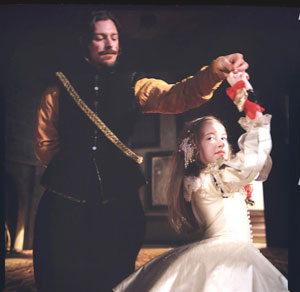
WA: I love your description of the 'democratic meeting of earth and sky,' and the idea that the open space clears the way for new ideas. I am thinking about your bloody dead bird paintings, the violent irreparability of it all, and how maybe Roswell might be a therapeutic environment. If the blaring, crowded influences of contemporary life damage or impede spiritual or soulful work, then maybe this open space and time allows it to grow again. But the temporal nature of your stay also requires that you maintain that tension between your heightened awareness of society/cruelty and this relaxed, inspired alone time.
What exactly were those birds about anyway? I think they are interesting images to contrast with your new work.
JF: I agree that there is a big difference between the bleeding birds and the new paintings, although materially they share a lot of common ground. But the single bird paintings, which as a group were entitled Blood Makes Noise , were more like symbols, vehicles to represent coexisting opposites — like movement and stillness, the illusionism of the painted bird and the flatness of the “blood,” the simultaneous delicacy and violence present in the image. I was also thinking about vulnerability, mortality, politics — for me those images were very loaded.
These new paintings are not really symbols of anything. I was just so taken by how the flocks of birds moved together in this amazing way, and I was very inspired by the seeming shared intelligence of the collective. These paintings were born out of many hours spent observing the birds, and then responding to what I have observed. I have not abandoned the figure, or the use of personal friends and family members (Neil, Nick, Ian and Tommy) as models; I am working on several pieces involving 'the boys' right now. But I think having this time and space has definitely brought out an intuitive, responsive and maybe more experimental frame of mind.
WA: Are you becoming more of a naturalist? Or have you always been one?
JF: I guess I am interested in using representation, and the framework for that representation (whether it be white paper, a grid, a found landscape), as a way to present shifting or contradictory perspectives. In the overhead paintings that are almost like mandalas and patterns, the paintings are actually very realistic, but because the perspective is unfamiliar, the relationship between the viewer and the figures is more fluid. It's sort of as if you are simultaneously in front of and above something. And I guess that is my primary interest in figuration, using the figure to provoke some awareness of space and the body in the viewer. The painting of the starry sky is shaped like the silhouette of an open mouth, so you are looking at something that is flat and infinitely deep at the same time, something that is huge and impersonal while also being an extremely intimate part of the body.
Right now, along with the bird paintings, I am working on a number of animations, where the original video footage is broken into individual frames, each frame is painted, and then the paintings are animated. The individual paintings and the animation are then exhibited together, juxtaposing two representations of a single event: one organized spatially in a grid, and the other temporally in a real-time animation. I will be showing them next fall at Women and Their Work. They take a long time to finish!
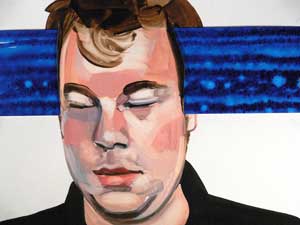
WA: Forgive me for not being more specific, but when I said 'naturalist,' I meant in the way Howard Gardner means it in his theory of multiple intelligences:
Naturalist intelligence designates the human ability to discriminate among living things (plants, animals) as well as sensitivity to other features of the natural world (clouds, rock configurations). This ability was clearly of value in our evolutionary past as hunters, gatherers, and farmers; it continues to be central in such roles as botanist or chef. I also speculate that much of our consumer society exploits the naturalist intelligences, which can be mobilized in the discrimination among cars, sneakers, kinds of makeup, and the like. The kind of pattern recognition valued in certain of the sciences may also draw upon naturalist intelligence.
JF: When I first read your question, I took it to mean 'realism,' as in how closely something mimics the real world. But then I started to think of naturalism in terms of art history. I was thinking about how artists like Courbet and Degas were simultaneously challenging pictorial illusionism while also introducing themes, subject matter and compositions closer to the everyday occurrences of their lives.
But now that I have read Gardener's quote, I see the question in an entirely different light. If I am interpreting the quote correctly, Gardener identifies naturalist intelligence as a kind of heightened sensory sensitivity, leading to a more acute awareness of one's surroundings. I am rereading Jared Diamond's fantastic book Guns, Germs, and Steel , and in it he compares the indigenous peoples of New Guinea to the peoples of the developed western world. And he talks about the New Guineans' ability to discriminate among an incredible number of different plant species, and how that ability has been largely lost in the developed world. I don't think that ability has been lost so much as rechanneled into what, as Gardener points out, is our consumer culture. I think the problem with this rechanneling is that the things we are giving our attention are all things that we have a mediated relationship with. So we are watching television, surfing the Internet, etc., all of which is fine, but it doesn't nurture or develop the profound awareness of our relationship to the natural physical world and to each other.
In terms of your question, 'Am I becoming more of a naturalist since coming to Roswell,' I would say that even outside of my artwork, I have found that spending quiet, self-referral time in nature is a joyful and evolutionary experience, and I am hopeful that heightened attunement to nature manifests in the new paintings of birds and skies. I think that is what I meant when I said the new bird paintings weren't really symbols of anything. I hope they are expressions of my newly refined 'naturalist' intelligence and can find a way to reflect that experience of being alert.
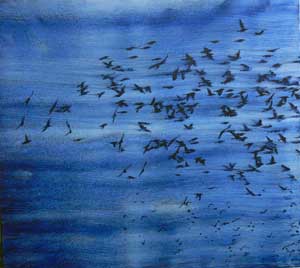
WA: How do the staged settings — very contrived environments into which you placed Neil — compare with the natural setting you are now in? Because I think you work within certain frameworks, or grids, and that your painted characters become the sites of tension within them.
JF: I think that in the found landscape pieces, it is that disjunction between figure and ground that challenges the illusionism of the picture plane. As a painter, I have always primarily painted from life, which is a very responsive, right-brain kind of process. And that way of working — responding to what is around me — is also very important for my subject matter. Working with the different found landscapes was a result of random events that presented these interesting materials to me. The first found landscape painting I made was literally on a wallpaper mural I found on an abandoned floor of the Gibbs building. And in a way, I think the new paintings of the birds and the stars are pretty similar in the sense that I am responding to the things that have presented themselves to me. They are found landscapes as well.
WA: What do your paintings look like? What are you imagining for your show?
JF: I am going to show a really big animation piece that I have made with Neil. In the animation Neil is portrayed transitioning from a reflective, unconscious state to a conscious awareness of the viewer; this is evidenced by the shift from an involuntary, automatic set of facial responses to a series of deliberate ones. And I also want to show some of the bird and star paintings, because they are really inspired by being here in Roswell.
WA: How did you capture that moment with Neil? What state was he coming out of? Was he meditating?
JF: I ask Neil or whoever the model is to perform a certain action, like screaming or, in the case of Neil, actually reading his poem. But what I have always found interesting are the actions, movements, etc., that are involuntary or independent from my directive. In the Neil piece, the part I chose to animate was the transition from his listening to other people, and not realizing the camera was on, to that moment of self-consciousness. The title of the piece, If I'm Thinking I'm Probably Feeling, is taken from Neil's poem 'Hair' and points toward the complexities of the relationship of mind to body, but also to what you said about a more analytical approach to the world versus an emotional one.
WA: You write that 'the animated blue paintings act as a kind of counterbalance to the density and emotional intensity of the portraits. In both the painted images as well as the animation, the blue screens conjure a sense of absence or freedom from the confines of the physical body.'
So, are you suggesting the contrast between the portraiture and the blue paintings may also be reflected in the acts of thinking versus feeling? The liberation allowed by feeling, a kind of looseness versus the constriction of thought?
Your new work really stays consistent with what I perceive to be your overarching themes (with your work I am always just starting to get it, and then all over again just starting to get it). I especially love thinking about the mouth/star image being infinitely deep while also finite. This idea also stands in relation to the birds' representations and the flatness of blood, and to the intense emotional confrontation of Neil's portraiture being settled by the blue paintings.
I can see how the idea of unraveling the complexities of the camera's role in portraiture naturally fits in your subject matter: again the flatness of the end result versus the depth of the experience.
JF: I like your thoughts on the relationship between the blue paintings and the portraits a lot. I had kind of imagined the blue screens as being the reciprocal view, like what Neil was looking at while we are looking at Neil. But also as a kind of non-objective representation of a period of time or a physical area mapped on the wall. I like the idea that it is an expression of freedom from the boundaries of the physical body. But now that I think about it as a correlative to the title of the piece — the portraits being analytical and representational, the blue screens being a more abstract representation of consciousness — I think that makes a lot of sense. The other painting of Neil with the blue running through his head is another animation, and in that one I was imagining it like a kind of meditation. You are helping me to understand my work better!
The mouth with the stars inside is inspired by a story in the Bhagavad Gita about Krishna and his foster mother Yasodhara, when he was a little boy:
Krishna was fond of butter, and he raided her storehouse for this delicacy. She discovered him in the act once and began to scold him. He opened his mouth to cry, and therein Yasodhara saw, to her astonishment, the whole Earth, the solar system, and the entire Universe. Filled with awe she bowed to Him, retreating, but he closed this vision and comforted her, but never did she forget this great vision — one which was shown to Arjuna in the eleventh chapter of the Bhagavad-Gita .
Images courtesy the artist.
Wendy Atwell is an art historian living in San Antonio.


